11R.Brown&J.Kulik, “Flashbulb Memories,” Cognition 5 (1977): 73–99. Относительно оценки, данной лет пятнадцать спустя, после неоднократных проверок, см.: Eugene Winograd&Ulric Neisser, eds., Affect and Accuracy in Recall: Studies of “Flashbulb” Memories (Cambridge, UK: Cambridge University Press, 1992). Из более современных работ см.: Olivier Luminet&Antonietta Curci, Flashbulb Memories:: New Issues and New Perspectives (New York: Psychology Press, 2009).
12Ulric Neisser & Nicole Harsch, “Phantom Flashbulbs: False Recollections of Hearing the News About Challenger ,” in Winograd & Neisser, eds., Affect and Accuracy in Recall , pp. 9–31.
13Neisser & Nicole Harsch, “Phantom Flashbulbs,” p. 19.
14Neisser & Nicole Harsch, “Phantom Flashbulbs,” p. 21.
15Neisser & Nicole Harsch, “Phantom Flashbulbs,” p. 30.
16“Flashbulb Memories Result From Ordinary Memory Processes and Extraordinary Event Characteristics,” in Luminer & Curci, Flashbulb Memories , p. 92.
17Ulric Neisser, “John Dean’s Memory: A Case Study,” Cognition 9 (1981): 1–22.
18“John Dean’s Memory,” p. 9. Курсив автора.
19“John Dean’s Memory,” p. 10.
20“John Dean’s Memory,” p. 13.
21Elizabeth Loftus & Katherine Ketcham, Witness for the Defense: The Accused, the Eyewitness, and the Expert Who Puts Money on Trial (New York: St. Martin’s Press, 1991), p. 20.
22Относительно данной проповеди см. главу 5.
23Относительно того, как ученые определяют, что, по-видимому, происходило в жизни Иисуса, на основании источников (Евангелий), которые зачастую проблематичны, см. мою книгу: Bart D.Ehrman, Jesus: Apocalyptic Prophet of the New Millennium (New York: Oxford University Press, 1999), особенно главы 2 и 6.
24Относительно аргументов в пользу того, что все эти воспоминания, в основе своей, историчны, см.: Ehrman, Jesus: Apocalyptic Prophet , главы 7–12.
25Как мы уже сказали, автор, описывающий эпизод из жизни Иисуса, может выдумать его сам или сознательно изменить унаследованное предание. Но даже в этом случае перед нами искаженная память: ведь люди, которые поверят его рассказу, «запомнят» событие в искаженном виде.
26Относительно базовой историчности суда над Иисусом и распятия см. подробнее мою книгу: Jesus, Apocalyptic Prophet .
27См.: Ehrman, Jesus: Apocalyptic Prophet , pp. 221–223.
28Согласно Исх 12:37, в исходе участвовали 600 тысяч мужчин. Число будет намного больше, если учесть женщин и детей.
29См. об этом: E.P.Sanders, Jesus and Judaism (Philadelphia: Fortress, 1985).
30См.: Sanders, Jesus and Judaism .
31См.: Bart D.Ehrman, How Jesus Became God: The Exaltation of a Jewish Preacher from Galilee (San Francisco: HarperOne, 2014), pp. 161–164.
5. Искаженные воспоминания и жизнь Иисуса
1A.R.Luria, The Mind of A Mnemonist: A Little Book About a Vast Memory (New York: Basic, 1968).
2Jan Vansina, Oral Tradition: A Study of Historical Methodology (New Brunswick, NJ: Transaction, 2006), p. 40. Эта книга представляет собой репринт с английского перевода 1965 года, выполненного Х. Райтом. Она включает также некоторые дополнительные материалы. Французский оригинал был опубликован в 1961 году.
3David Henigie, Oral Historiography (New York: Longman, 1982), p. 5.
4 Oral Historiography , p. 5.
5Albert B.Lord, The Singer of Tales (Cambridge, MA: Harvard University Press, 1960). Именно на эту классическую работу я ориентировался, кратко пересказывая труды Пэрри и Лорда.
6 Singer of Tales , p. 4.
7 Singer of Tales , p. 99.
8Jack Goody, The Interface Between the Written and the Oral (Cambridge, UK: Cambridge University Press, 1987), p. 84.
9Goody, Interface Between the Written and the Oral , pp. 84–86.
10 Singer of Tales , p. 5.
11Jack Goody, The Domestication of the Savage Mind (Cambridge, UK: Cambridge University Press, 1977), p. 29.
12Walter J.Ong, Orality and Literacy: The Technologizing of the Word , 30 thanniversary edition [London: Routledge, 2002 (первоначальное издание – London: Methuen, 1982)], p. 61. Онг резюмирует результаты исследований Гуди.
13 Domestication of the Savage Mind , pp. 98–99.
14 Orality and Literacy , p. 57.
15См. прим. 22.
16Традиция, понятая подобным образом, сильно напоминает эксперименты Ф.Ч.Бартлетта по «серийному воспроизведению». См. главу 4.
17 Oral Tradition , p. 76.
18David C.Rubin, Memory in Oral Traditions: The Cognitive Psychology of Epic, Ballads, and Counting-out Rhymes (New York: Oxford University Press, 1995), p. 130.
19 Oral Tradition , p. 43.
20 Oral Tradition , p. 109.
21 Oral Tradition , p. 109.
22Jan Vansina, Oral Tradition as History (Rochester, NY: Broydell & Brewster, 1985), p. 65.
23У Луки есть аналогичный материал (Лк 6:17–49). Однако эту проповедь Иисус произносит на равнине. Она намного короче, чем Нагорная проповедь, и содержит ряд отличий от нее.
24См. предыдущее примечание.
25Обзор научных гипотез относительно Нагорной проповеди см. в: Warren Carter, What Are They Saying About Matthew’s Sermon on the Mount? (New York: Paulist, 1994).
26Werner H.Kelber, The Oral and the Written Gospel: The Hermeneutics of Speaking and Writing in the Synoptic Tradition, Mark, Paul, and Q (2 nded.; Philadelphia: Fortress, 1997). Курсив В.Келбера.
27В большей части комментариев содержатся возможные объяснения этой концовки. См. обзор гипотез, например, в: W.D.Davies & Dale Allison, A Critical and Exegetical Commentary on the Gospel According to Saint Matthew , vol. 3 (Edinburgh: T&T Clark, 1988).
28См. подробнее: Bart D.Ehrman, Jesus: Apocalyptic Prophet of the New Millennium (New York: Oxford University Press, 1999), главы 8–9.
29Относительно данного отрывка см. Bart D.Ehrman, Misquoting Jesus: The Story Behind Who Changed the Bible and Why (San Francisco: HarperOne, 2005), pp. 158–161.
30См. текст в: Bart D.Ehrman & Zlatko Pleše, The Other Gospels: Accounts of Jesus from Outside the New Testament (New York: Oxford University Press, 2014), pp. 110–111.
Читать дальше
Конец ознакомительного отрывка
Купить книгу
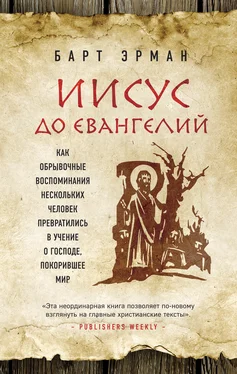

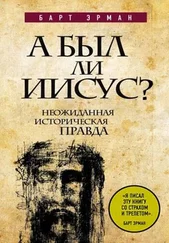

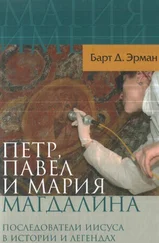
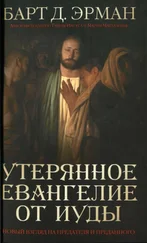
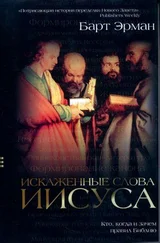

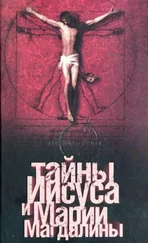
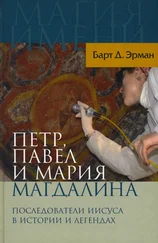
![Барт Эрман - Триумф христианства [Как запрещенная религия перевернула мир] [litres]](/books/406447/bart-erman-triumf-hristianstva-kak-zaprechennaya-re-thumb.webp)
![Барт Эрман - Почему мы страдаем? [Как получилось, что в Библии не нашлось ответа на этот вопрос]](/books/406894/bart-erman-pochemu-my-stradaem-kak-poluchilos-cht-thumb.webp)
